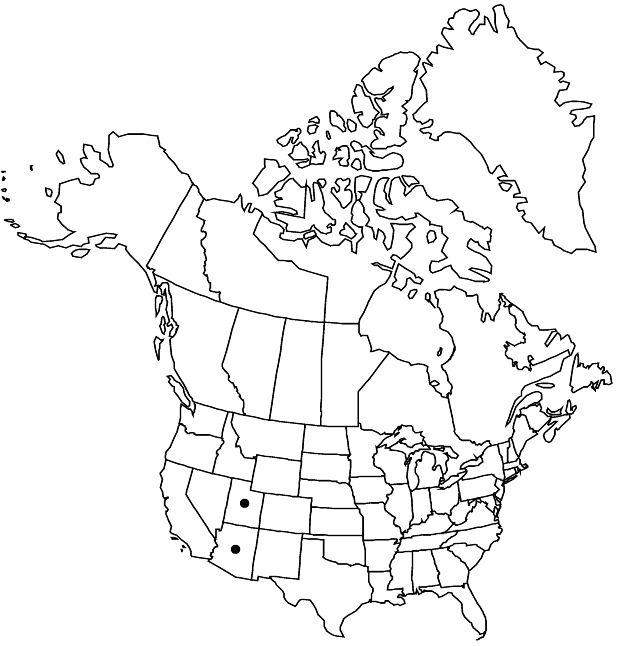Primula specuicola
Bull. Torrey Bot. Club 40: 461. 1913 ,.
Plants 10–25 cm, herbaceous; rhizomes thin, short; rosettes not clumped; vegetative parts heavily white-farinose. Leaves not aromatic, indistinctly petiolate; petiole broadly winged; blade without deep reticulate veins abaxially, spatulate, 8–15 × 2 cm, thin, margins irregularly and sharply dentate to sinuate-dentate, apex obtuse to acute, surfaces glabrous. Inflorescences (6–)10–25-flowered; involucral bracts plane, ± equal. Pedicels erect, thin, 10–30 mm, length 2–5 times bracts, flexuous. Flowers heterostylous; calyx green, campanulate, 3–5 mm; corolla lavender, tube 8–10 mm, length 2 times calyx, eglandular, limb 10–16 mm diam., lobes 5–8 mm, apex emarginate. Capsules ellipsoid, length 1–2 times calyx. Seeds without flanged edges, reticulate. 2n = 18.
Phenology: Flowering summer.
Habitat: Moist seepage areas on carbonate bedrock in canyons
Elevation: 800-2500 m
Distribution

Ariz., Utah.
Discussion
Primula specuicola has relatively large corollas, relatively long pedicels, and irregularly and sharply dentate to sinuate-dentate leaves with conspicuous farina. It is a characteristic member of hanging-garden communities along the canyon walls of the Colorado River and its tributaries. Plants with a more exserted capsule were given the name P. hunnewellii; this appears to be only a minor variant that does not warrant infraspecific recognition.
Selected References
None.